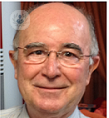10 nail problems that may be related to other pathologies
Written by:Nails can be a good indicator of problems, not only aesthetic, but also, and most importantly, health. It is therefore important to distinguish symptoms nail to prevent disease.

Nail striations
Stretch marks on nails can be of two types:
- Longitudinal: they are one of the first complaints in Dermatology. They often appear with age, from approximately 60 years and have a hereditary origin, but have no pathological significance. Currently, although there is no concrete and effective treatment, can improve with topical measures applied.
- Transversal or "Beau 's lines" are caused by a growth disturbance of the nail, usually acute fevers, nutritional disorders, cytotoxic drugs or serious illnesses.
Soft and weak nails
In this case, the nails may be:
- Thin and consistency: they can be caused by chronic diseases, rheumatism, anemia, among others.
- With onicerresis: easily broken or leaves them a small slit. It usually happens by repeatedly putting your hands in water, especially after a certain age.
Separation of the nail layers
This problem, called lamellar onychoschizia occurs from 50-60 years, also due to excess hand contact with water.
yellow nails
This may be due to an abuse of lacquers, bacterial or fungal infections or also psoriasis (skin disease that causes scaling and inflammation).
ingrown toenails
It occurs when the nail is driven into the flesh and causes an inflammation. This condition is usually associated with young people and their cause is mainly hereditary and traumatic.
To treat it, it is recommended to take a less tight shoe and not end in a point; not cut spikes nail toe, but leave the edges and cut into squares; wet a cotton swab with antiseptic and place it on the edges (between the nail and meat); also it advised to leave the white part of the nail with 1 mm in length.
Nail fungus
The nail fungus or fungal infection (onychomycosis) are the most common cause, but not the only cause of nail diseases, as people generally think. The main indications fungi are:
- Changing distal Color: yellowish or whitish area may appear on the white part of the nail.
- Hyperkeratosis: separation of the nail by thickening in some areas of the nail.
- Dust beneath the nail.
These three factors can be together or in isolation, but need not mean that they are fungal in all cases.
Nail microtrauma
Usually due to pressure from shoes or aggressive practice some sports, such as running or playing tennis. It is characterized by purplish or yellowish stripes on the nails and the only consequence is aesthetic. The problem disappears abandoning that habit or sport.
White spots on nails
Generally it thought to be due to lack of calcium, but this claim is false. In fact, the small white spots on fingernails are due only to mild microtrauma near the cuticle (bottom of the nail) caused by as simple as putting their hands in their pockets wearing tight pants gestures.
On the other hand, if the white spots are large, it may be a sign of renal failure or cirrhosis.
nail biters
Nail biting, also called nail biting, not only generates aesthetic problems, but can also alter the shape of the teeth and affect the health of nails, as they do not grow well and create microtrauma. In addition, small wounds around the nail form, causing inflammation and pain in the finger.
Lack of protein in nails
When nails are weak, it is not due to lack of calcium, but protein, which, following a proper diet with the help of a diet Nutricosmetics hair and nails, the problem can be solved.



